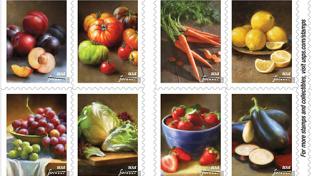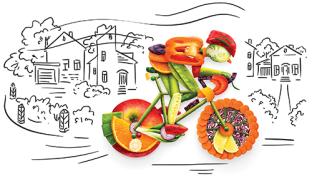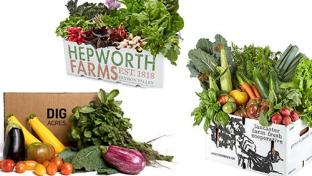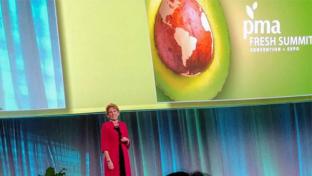The ABCs of Fall Produce Amid School Uncertainty
Fall is harvest time and back to school time (maybe). Regardless of whether they’re in a physical school building, kids — not to mention their grown-up caregivers — need healthy lunches with produce every day.
Key Takeaways
- Consumers are currently visiting grocery stores less often, and looking for ways to stock up on fruits that will last longer at home if refrigerated.
- Lunchboxes can be for kids or adults, especially if they’re bento boxes.
- Help customers create lunches their kids want to eat, and promote value-added produce for busy consumers who will be packing lunches.
Shorter days; crisp, cool air; and crispy, sweet apples can be signs that fall is here. Many fruits and vegetables are at their sweetest during this time. When kids head back to school and adults to workplaces, healthy lunches will be needed. Even if consumers stay home longer, attention to diet is important. Here are a few ABCs of fall produce, featuring some new and convenient fruit and vegetable items to promote for lunchboxes.
A is for Lunchbox Apples
One of the largest fruit growers in the United States, Wenatchee, Wash.-based Stemilt will continue its Lil Snappers line for fall. “It aligns well with the typical back-to-school timing, because that’s when our apples and pears are newly harvested,” notes Brianna Shales, Stemilt’s senior marketing manager. The smaller-fruit program has evolved into the leading 3# pouch-bag brand for apples, with year-round availability.
Lil Snappers has seen great growth during the COVID-19 pandemic because of the package size, Shales says: “Consumers are visiting the grocery store fewer times and will stock up on fruits like apples and pears that will last a while if refrigerated.” The package provides nine to 12 kid-sized fruits to help parents provide a healthy snack for kids whether they’re at school or still at home. “Personally, my kids request many snacks during these at-home days, and it’s nice to have the package of apples sized just for them in the fridge,” she observes.
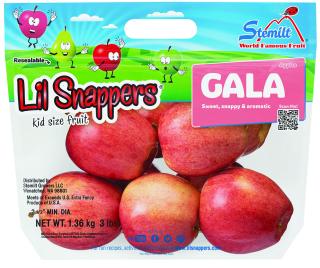
“The pandemic has changed grocery shopping habits so it’s encouraging to see both produce sales and organic sales up year over year,” asserts Shales. “In fact, apples are among the top four organic items in the produce department.” Multiple organic varieties are available in the Lil Snappers line, including Gala, Pink Lady, Granny Smith and Fuji.
Shales believes that carrying organic Lil Snappers apples is an excellent opportunity for retailers to strengthen the category, especially while consumer habits continue to change.
“Lil Snappers is great for online sales,” she notes. “Also, while shopping trip frequency is down, the larger pack size provides enough apples to feed a family with two kids an apple snack every day for a week.”
B is for Bento Boxes
If you’re not familiar with bento boxes, now is the time to learn about this concept, which is catching on quickly with kids and adults. The bento box originated centuries ago in Japan as a single-portion meal or snack container. Boxes are available in many stores now. They are reusable and can contain almost any kind of food, especially fruits and vegetables. It’s a great way to compartmentalize foods by segment, control portion sizes, and even keep foods separate for consumers — many of them youngsters — who don’t like their food items to touch. Children can help fill their own boxes for the next day, whether for school or at-home consumption.
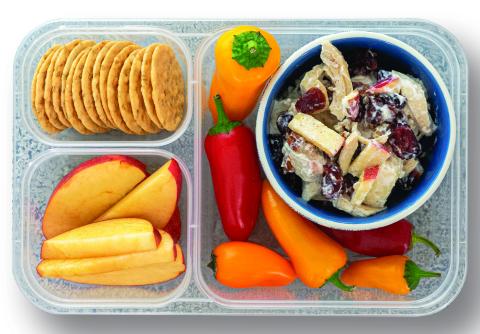
A display of several bento boxes in the produce department is ideal for generating customer interest and sales. Boxes are available at a variety of prices. Hikers and other outdoor athletes also enjoy them. According to several dietitians, each box should contain a protein, vegetables with dip if possible, and fruit.
“This year, we are trying something new with our two young kids,” says Cindy Sherman, director of marketing at Frieda’s Specialty Produce, in Los Alamitos, Calif. “I picked up bento boxes that make packing lunches a breeze. It’s easy to fill the compartments with kumquats, jicama sticks, cheese and whole grain pretzels.”
Powering kids’ lunchboxes is a high priority for Orlando, Fla.-based Produce for Kids (PFK). Back-to-school may be taking place in different ways this year, but the group is still teaming up with health-conscious brands to bring lunchbox ideas to families.
“We recognize that lunch still needs to be consumed and now more than ever, we need to make sure those lunches are packed full of nutrition,” notes Amanda Keefer, PFK’s managing director. Brands currently participating in the program include Bee Sweet Citrus, Crispy Green, Litehouse, NatureFresh Farms, Pero Family Farms, RealSweet and Zespri, and the organization is looking for more key partners.
Healthier Days for the Family
Eating fruits and vegetables is, of course, an ideal way to create healthy diets for children and adults alike, and there are certain spices and produce that increase immunity against diseases.
Los Angeles-based Melissa’s now offers a package of 70% ginger/30% turmeric, two spices that are known for their anti-inflammatory characteristics, as well as making good additions to a variety of dishes. “Since a little goes a long way in these two powerful spices, Melissa’s is now offering them in one convenient package,” says Robert Schueller, the specialty produce company’s public relations director.
The Brentwood, Mo.-based Produce for Better Health Foundation (PBH), meanwhile, recommends marketing certain produce to adult shoppers who are seeking food safety and immune health. Fall favorites like sweet potatoes, pumpkin, carrots and certain squashes are all sources of beta carotene, an antioxidant that may support immune health. Sweet or spicy peppers as well as spinach are high in vitamin C. Combined displays and signage can draw shoppers’ attention to these options that help keep immune systems running at their peak, notes Annette Maggi, a registered dietitian and retail accounts manager at PBH.
“We work with Produce for Kids,” says Jeff Wingo, supervisor of produce operations at Town & Country Supermarkets, in East Salem, Mo. “We have point-of-sale material in our stores, and also make note of certain items in our ad if they are a Produce for Kids sponsor. We have also used our social media pages to promote healthy recipes and partner with them on other events.”
Convenience Begins with “C”
“Convenience is the name of the game for encouraging kids to eat fruits and vegetables,” observes Annette Maggi, retail accounts manager for the Produce for Better Health Foundation (PBH), based in Brentwood, Mo. “Retailers can promote pre-cut fruits and vegetables as perfect options for adding to lunchboxes or to have on hand for easy self-serve snacks. Or produce departments can offer recipes done all in pictures that kids can make themselves, which are bundled with the produce ingredients.”
Supermarkets will be promoting items for lunchboxes with convenient healthy food to keep kids energized all day. “Frieda’s Chilean kumquats are the perfect school snack because they are bite-sized, delicious and ready to eat,” suggests Alex Berkley, director of sales at Frieda’s. “With their convenient packaging, it is easy to merchandise them with other common snacking produce like apples or oranges for a back-to-school destination set.”
Retailers can also add items such as Frieda’s cape gooseberries, jicama and watermelon radishes to their displays, since shoppers are on the lookout for new, healthy treats that will appeal to kids.
To inspire parents, Frieda’s will host a social media campaign starting in August on Instagram and Facebook, and dedicated to sharing what parents are putting in their kids’ lunchboxes as they head back to learn. The campaign uses the hashtag #WhatsForLunch.
Los Angeles-based specialty produce company Melissa’s, meanwhile, has its own range of convenient and healthy produce. For example, the company’s Muscatos grapes are convenient and a naturally sweet option for lunchboxes or snacks. The red, green or black seedless grapes are available during the California season of late June to early October, with peak season from mid-July to mid-September.
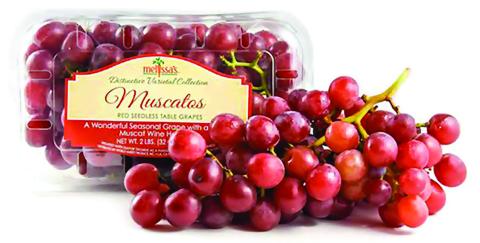
“Kids love flavorful and colorful grapes,” says Robert Schueller, director of public relations for Melissa’s. Its Muscatos grapes, for instance, have a crisp texture and juicy interior. “Muscatos grapes are much sweeter than the average grape, measuring at a Brix [sweetness] level of at least 22 compared to the average grape Brix of about 16,” he notes.
Since only washing is needed, Muscatos grapes are a convenient and welcome lunch addition. They may be stored for up to two weeks wrapped in a paper towel in a plastic bag in the refrigerator.
Melissa’s will run its biggest fall promotion, next to Thanksgiving, from Sept. 1 through Oct. 31. This will be the fourth year for Freaky Fruit, when retailers can create Halloween-themed displays of Melissa’s exotic fruit. According to Schueller, participating retailers see sales increase 20% year to year. The company provides signage and other promotional materials.
For more ideas, check out Lunchbox Dad — also known as Beau Coffron — at www.lunchboxdad.com. The site bills itself as “Making parents’ lives easier and kids’ lunches exciting.” There are many bento box ideas on the site. Coffron is among 24 of PBH’s Fruit and Vegetable Ambassadors in Action who offer posts, tips and tricks to encourage kids to eat more fruits and vegetables. As kids become more familiar with various fruits and vegetables at lunchtime, they’ll want to keep adding produce to maintain a healthy diet in the future.



